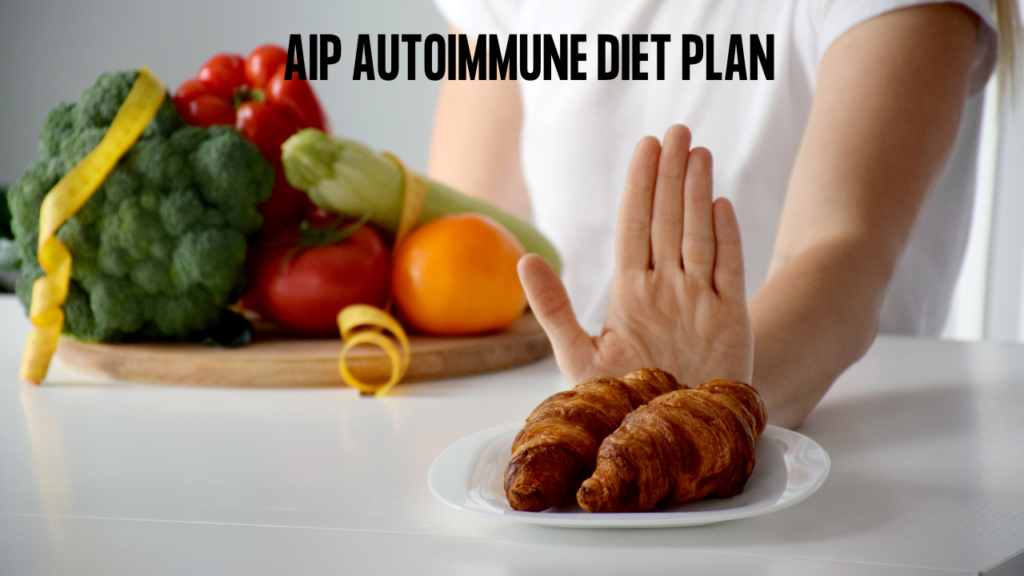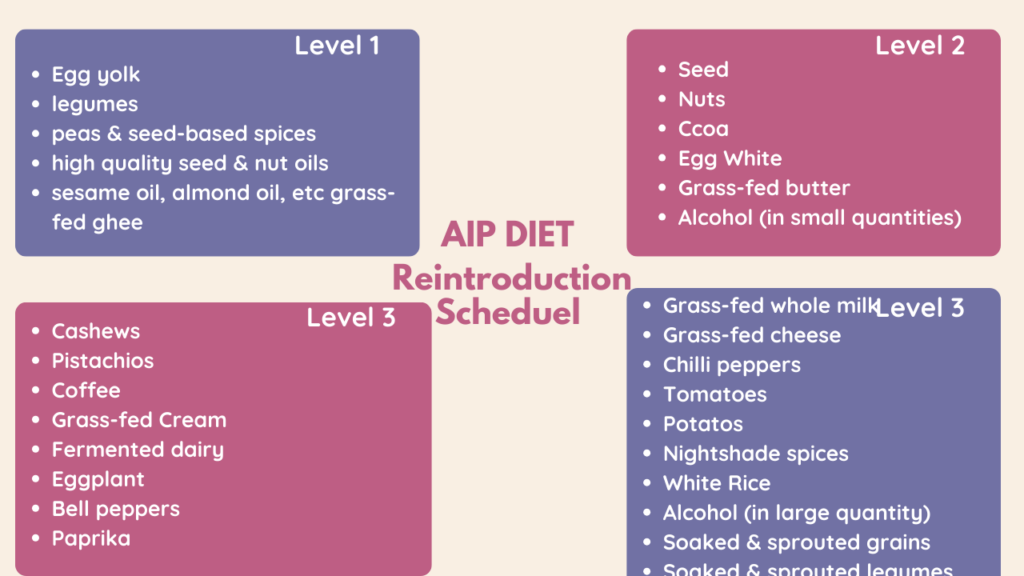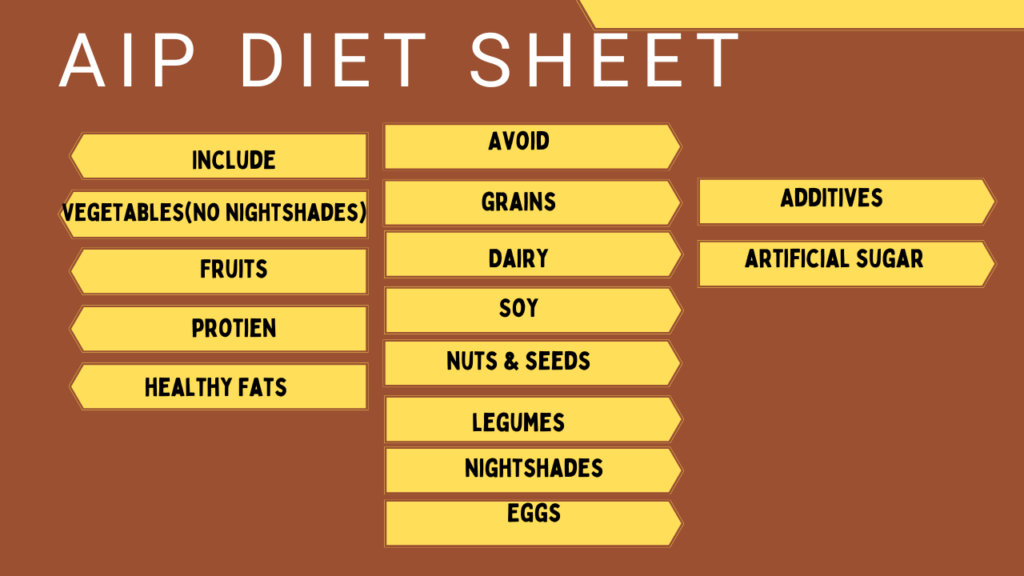
The Auto-Immune Protocol diet was created to help individuals with autoimmune conditions by decreasing inflammation and providing essential nutrients to support the body. These are questions many people ask when starting to make this lifestyle change what foods are okay to eat and what are the challenges that come from living it out? A diagnosis of an autoimmune disease like Hashimoto’s thyroiditis, or having symptoms like joint pain, brain fog, tiredness, or stomach pain can be really tough. A special diet called the Auto-Immune Protocol (AIP for short) diet, or a more enhanced version of the elimination diet, could improve your life and you feel better.
Countless individuals who’ve followed the AIP diet have reported feeling improved overall health, along with a noticeable reduction in issues like fatigue and discomfort in the stomach, Hashimoto’s Thyroiditis, and joints. Join the Confident Hormone Club today and experience the transformative power of the AIP diet for a healthier, happier life!
What is the AIP Diet or Autoimmune Protocol Diet?

The AIP diet is short for Autoimmune Protocol. It’s a specialized eating plan for people suffering from autoimmune diseases. This diet aims to help our bodies get better by reducing the inflammatory burden, stemming from food interactions with the digestive tract, which happens when our bodies are not feeling well. The AIP diet takes away certain foods that can make inflammation worse, mess up the balance of helpful bacteria in the gut, harm the gut, or make the immune system too active. People on this diet avoid these foods for at least 30 days. After that, they slowly try adding them back one by one to see if their body can handle them again.
An autoimmune disease is when your body’s defense system causes inflammation and attacks its own tissues. Food is a powerful tool that can help reduce inflammation and soothe the immune system. However, at Make Care Health, we understand that just changing your diet might not be sufficient to heal and get rid of symptoms from an autoimmune disease. Specific protocols of gut healing, immune support, and eliminating infections must also be done. Before starting, we might need to do tests like checking your blood, studying your poop (comprehensive stool analysis), checking urine (Organic Acid Testing), and finding out if you’re sensitive to certain foods.
Just changing your diet might not be enough to completely heal. We often need to add extra supplements to help our gut heal properly. Normally, you can eat green beans, snow peas, and sugar snap peas unless a low FODMAPS diet is needed. This is because green beans are not fully grown bean seeds. In autoimmune disease, problems with brain chemistry, adrenal fatigue, and how well your cells can bounce back (mitochondrial resilience) might be causing issues that need to be addressed.
Avoiding certain foods is important because they can make your gut irritated and make imbalances in the Gut Associated Lymphoid Tissue (GALT). GALT is like the gut’s defense system, and it plays a big role in our immune system. This system can either attack foreign invaders (which is good) or attack our own tissues (which is bad in autoimmune diseases). The AIP can help address the GALT imbalances in the intestines, by strengthening the integrity of the gut tissue formation, creating the immune system response. Many people agree that dealing with gut-related inflammation is important when treating autoimmune diseases.
Think of your immune system as a superhero that makes special soldiers called antibodies to protect your body from bad things. But in some people with a problem called autoimmune disorders, these antibodies get mixed up and attack the good parts of the body instead of the bad stuff. This is called autoimmunity. This can make you feel not so great, with things like sore joints, tiredness, tummy troubles, aches in your stomach, feeling fuzzy in your head, and causing problems in different parts of your body and nerves. Some of the names for these problems are rheumatoid arthritis, lupus, IBD, type 1 diabetes, and psoriasis.
These problems can happen for various reasons, like genetics (what you inherit from your family), infections, stress, inflammation (when parts of your body get irritated and swollen), and using certain medications. If your gut has tiny holes in its wall (kind of like a leaky roof), this is called a “leaky gut,” and it might be linked to some autoimmune diseases starting to develop.
Which Health Issues Can Get Better?
The AIP diet may help improve more than 100 different autoimmune conditions. Some of the more common ones include:
- Rheumatoid arthritis
- Type 1 diabetes
- Psoriatic arthritis
- Multiple sclerosis
- Sjogren’s or dry eye syndrome
- Celiac disease
- Crohn’s or Colitis, or Irritable Bowel Disease
- Lupus
- Hashimoto’s disease-causing hypothyroidism
- Ankylosing spondylitis causing back pain
How does an autoimmune diet plan work?
The AIP diet is a lot like the paleo diet. They both have similar foods you can eat and foods you can’t. They also have different phases or parts. Some people think of the AIP diet as a stricter version of the paleo diet because it’s more limited.
Preparation
The Eliminating Foods Period
- The first part is when you stop eating certain foods and medicines that might hurt your gut by causing inflammation, messing up the balance of good and bad bacteria, or making your immune system react badly.
- The first phase is when you stop eating certain foods and medicines that might hurt your gut by causing inflammation, messing up the balance of good and bad bacteria, or making your immune system react badly.
The first 2 weeks
Get ready for the full elimination diet over 1-2 weeks. While planning your meals, check what’s in your pantry and fridge. Start by using up what you have and gradually remove 1-2 types of foods (like gluten/wheat or dairy or eggs). This helps you see how much your diet will change.
Start by making a meal plan for the next 4 weeks. Include:
- 2 choices for breakfast
- 6 choices for lunch
- 6 choices for dinner
- 4 snack options
- 4 meals you can buy (from a grocery store or restaurant) when you want something quick or a treat. If possible, not everyone has healthy take-out choices nearby, especially in smaller towns.
For the next 4 weeks, focus on cutting out these 8 foods:
- Gluten/wheat
- Corn
- Dairy
- White potatoes
- Eggs
- Soy
- Alcohol
- Refined oils
- Chocolate
To succeed during this time, prepare meals and snacks to take to work or events. Make sure these are tasty and something you enjoy. Practice cooking them during the 2-week transition so you know what meals you like.
- Stop using tobacco, drinking alcohol, having coffee, eating oils, food extras, sugar that’s been changed, and some medicines like non-steroidal anti-inflammatory drugs (NSAIDs such as ibuprofen, naproxen, diclofenac, and strong aspirin).
- This phase encourages the consumption of fresh foods with lots of good nutrients, like meat that’s not processed too much, fermented foods, and bone broth. Reducing stress, sleeping well, and moving your body life can be better.
- How long you stay in the first part of the diet depends on when you start feeling better. Most people do it for 30 to 90 days, but some feel better in just 3 weeks.
The Reintroduce Foods Period

The objective of this phase is to pinpoint which foods might be responsible for a person’s symptoms and gradually reintegrate all foods that don’t trigger any symptoms. By consistently avoiding troublesome foods, this approach allows individuals to savor a wide variety of foods that are in harmony with their tolerance levels.
The last 4 weeks of re-introduction
After 4 weeks, start bringing back different foods one by one, trying each for 3 days. Write down how you feel in a journal. Begin with eggs on day 1 and pay attention to any symptoms or changes in how you feel.
- 15min after eating
- 3 hours after eating
- 24 hours after eating
- 72 hours after eating
After waiting for 3 days since trying the first food, have a serving of the second food you want to bring back. Keep monitoring how you feel. If there are no problems with the first food, you can keep it in your diet. But you can also avoid it if you prefer while reintroducing other foods.
If you notice symptoms from the reintroduced food, continue avoiding it until you finish bringing back all your foods. After the 4 weeks, you can decide to eat the foods that caused symptoms but do so with knowledge and in moderation. You can also work with your natural health doctor to heal your gut and use tools to help your body recover, making it easier to digest more foods without issues from treatment. Once you notice improvements in symptoms and overall well-being, you can start reintroducing more foods.
Within this phase, the excluded foods are systematically reintegrated into the dietary regimen, following a step-by-step approach that takes into account the individual’s tolerance levels. If your body is okay with certain foods, you can eat them again. But if a food makes you feel bad, don’t eat it. Remember, what your body can handle might change as time goes by. So, you might want to try foods that didn’t work before again from time to time.
Systematic Food Reintroduction Strategy
- First, try a diet that doesn’t cut out too many foods.
- Pick one food you want to try again.
- Eat it a few times during the day, and then don’t have it for 5-6 days.
- Start with a tiny bit, like one teaspoon. Wait for 15 minutes to see if you feel okay.
- If you feel bad, stop and don’t eat that food. If you feel fine, try a little more, like 1 1/2 tablespoons.
- Watch how you feel for 2-3 hours.
- If you feel bad during this time, stop and don’t eat that food.
- If you feel fine, have a regular serving of the same food.
- But don’t eat it for 5-6. days, and don’t try other new foods. f you feel good for 5-6 days, you can put that food back in your diet.
- Then, you can repeat these 5 steps with another new food.
Maintenance Period
In this phase, you focus on making the diet fit you better. For example, some foods might make you feel sick, so you should keep avoiding them in the long run while someone else might not have to. You might also find ways to eat a little bit of those foods in certain situations that work for you. In this phase, it’s okay to take a break from the diet when you’re traveling or during special events, especially if you only have mild to moderate symptoms from foods you’ve identified as triggers.
If those foods are really making your daily life harder, it might not be worth eating them again. What you do with the information you’ve learned is your choice. You also decide how strict you want to be with your diet and what rules you want to set for yourself. If it helps reduce autoimmune reactions, you can stick to your new way of eating for a long time.
What foods are allowed on the AIP diet?
What foods are allowed on the AIP diet?
| FOODS NOT ALLOWED | FOODS ALLOWED |
| Nightshades (tomatoes, potatoes, peppers, eggplant, paprika, mustard seeds, all chili’sincluding spices) | Vegetables (except nightshades), including green beans |
| Alternative sweeteners like xylitol, stevia, mannitol | Fruits (limit to 15-20 grams fructose/day) |
| Grains (Corn, Wheat, Millet, Buckwheat, Rice, Sorghum, Amaranth, Rye, Spelt, Teff, Kamut) | Fats: olive oil, coconut oil, avocados, lard, bacon fat, cultured ghee (certified to be free of casein and lactose) |
| Beans/Legumes (this includes all beans like kidney, pinto, black as well as Soy in all its forms) – except green beans | Coconut products including coconut oil, manna, creamed coconut, coconut aminos, canned coconut milk (with no additives like guar gum and carageen or bpa lined cans) shredded coconut (this list does not include coconut sugar and nectar) |
| Culinary herbs from seeds (mustard, cumin, coriander, fennel, cardamom, fenugreek, caraway, nutmeg, dill seed) | Non-Seed Herbal Teas, filtered water, seltzer, or mineral water. |
| Tapioca. I eliminate this in the first 6-8 weeks because it is a known gluten cross reactor according to Cyrex Labs Gluten Cross-Reactivity Test | Bone Broth |
| Dried fruits and/or over-consumption of fructose (I recommend up to 2 pieces of fruit a day) | Non-Seed Herbal Teas, filtered water, seltzer or mineral water. |
| Dairy Products | Grass Fed Meats, Poultry and Seafood |
| All Processed Foods | Vinegars: Apple Cider Vinegar, Coconut vinegar, red wine vinegar, balsamic (that has no added sugar) |
| Alcohol | Green Tea |
| Chocolate | Sweeteners: occasional and sparse use of honey and maple syrup (1 tsp/day) |
| Eggs | Binders: Grass Fed Gelatin and Arrowroot Starch (watch the starch however if you have adrenal issues) |
| Gums (guar gum, Tara gum, Gellan gum, Gum Arabic) | Herbs: all fresh and non-seed herbs are allowed (basil tarragon, thyme, mint, oregano, rosemary, ginger, turmeric, cinnamon, savory, edible flowers) |
| Peanuts and peanut butters | Grains: OATs |
What Risks Should You Consider?
If you want to see if changing how you eat can help your autoimmune condition, talk with our naturopathic doctor about a diet that’s not as strict as the AIP diet. They can help you choose what to eat and make sure you still get all the good stuff your body needs by suggesting healthy alternatives to the foods you can’t have. Before you start taking any new supplements consult with our doctors. Since you need to stop eating many foods, you might not get all the important stuff your body needs, which could lead to other health issues. Don’t attempt the AIP diet if you are:
- Underweight
- Pregnant
- Malnourished
How can you tell if you’re getting better and can start eating some foods again?
This is different for each person. Here are two ways to know if you’re getting better:
- Your blood tests show improvements.
- You feel better, and your symptoms are not as bad as before.
- The specifics of this are different for everyone, so it’s important to talk to your own doctor or healthcare provider about what getting better might mean for you personally.

